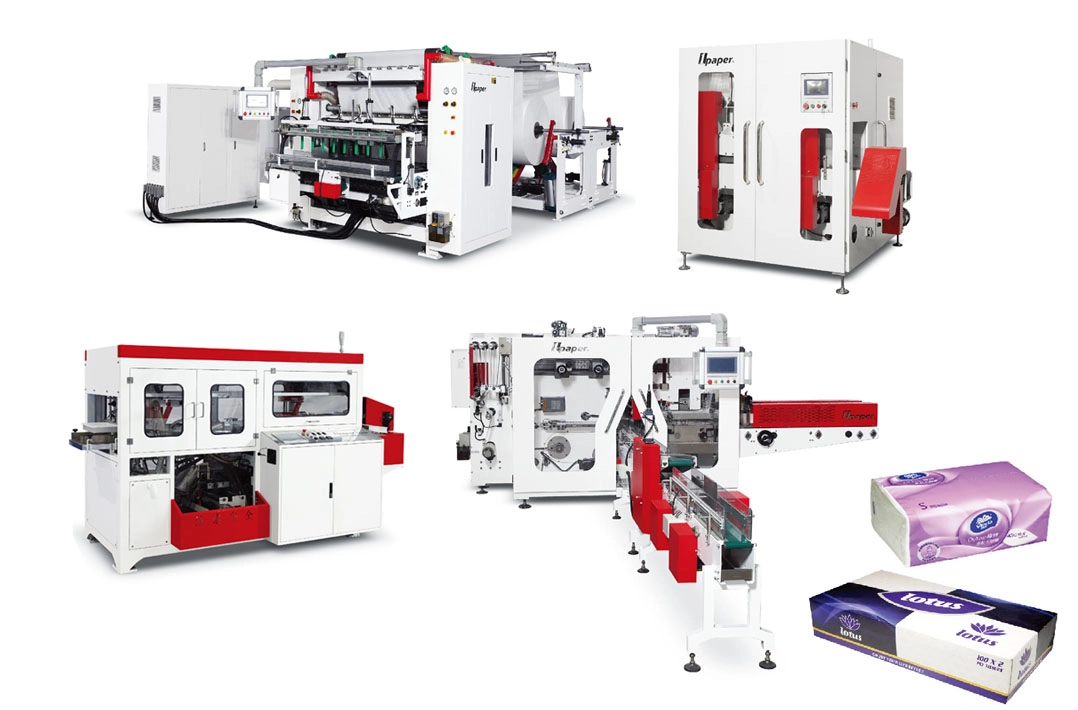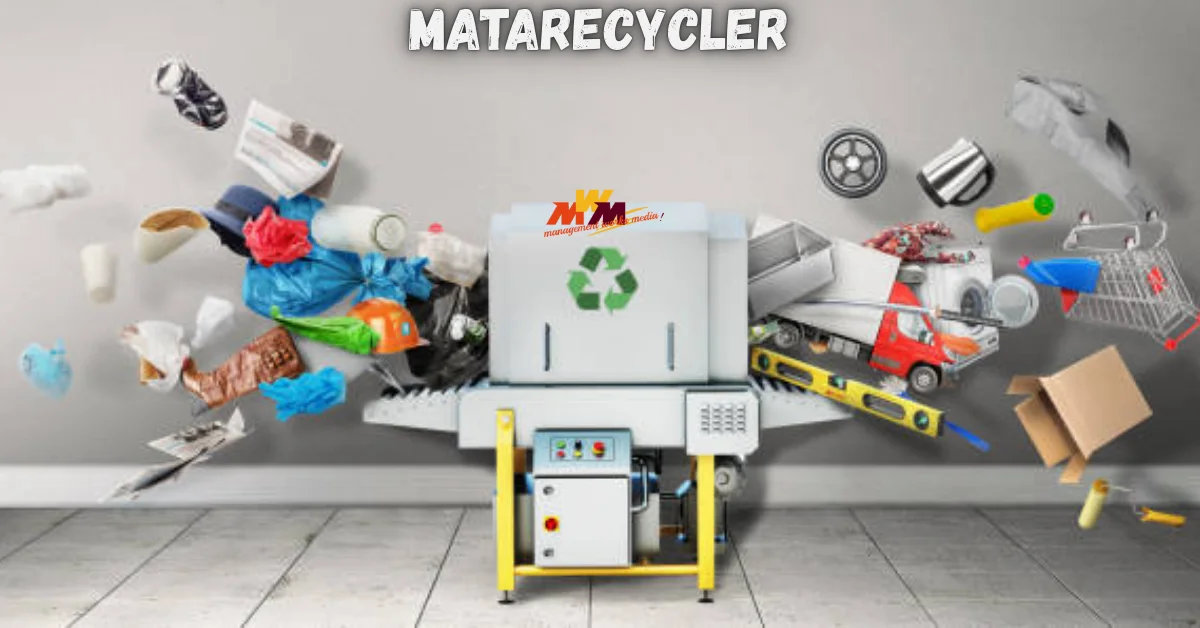Tech
The Evolution and Significance of Facial Tissue Machinery in Modern Manufacturing
Published
2 months agoon
By
Rock Seo
Facial Tissue Machinery are one of the most common household and commercial products used around the world. Whether it’s for personal hygiene, cleaning, or as part of medical or beauty routines, the demand for Facial Tissue Machinery is constant and ever-growing. Behind every soft and absorbent tissue lies an intricate process of manufacturing powered by specialized machinery. In this article, we will explore the importance of Facial Tissue Machinery, its evolution, the technology behind its design, and how it shapes the production of facial tissues in the modern era.
The Role of Facial Tissue Machinery in Everyday Life
Facial tissues, often referred to as “Kleenex” in many parts of the world (named after the brand that popularized them), are primarily used for wiping the face, nose, or hands. However, the uses of these tissues are far more diverse. They serve as a crucial item in both public and private settings: from homes and offices to schools and hospitals.
Given the high usage rate, it’s easy to see why the facial tissue market has grown into a multi-billion dollar industry. According to recent market reports, the global Facial Tissue Machinery market continues to expand with a high demand for premium quality products such as those that are hypoallergenic, extra soft, or eco-friendly. Meeting these diverse needs is only possible through advanced and efficient machinery that can produce facial tissues at scale while ensuring consistent quality.
The History and Evolution of Facial Tissue Machinery
The creation of facial tissue products dates back to the early 20th century. Before disposable facial tissues, people often used cloth handkerchiefs, which required regular washing. The invention of the facial tissue is credited to the early 1920s, when a company called Kimberly-Clark developed a tissue-based product initially marketed as a face powder remover. The product’s success as a disposable alternative to handkerchiefs led to its mass production.
In the early days, facial tissues were produced by hand or on rudimentary machines, which limited production speed and scale. The machines used at that time were relatively simple, focused primarily on cutting sheets of tissue from large rolls of paper. However, as demand grew, companies sought ways to increase production capacity, enhance the quality of tissues, and reduce costs.
As technology evolved, the manufacturing process was automated. This shift laid the foundation for the highly advanced facial tissue machinery seen today. Modern facial tissue machinery is not just faster and more efficient, but also incorporates features that allow for a variety of tissue types, sizes, and qualities to be produced in one facility.
The Basic Process of Facial Tissue Production
The production of facial tissues typically involves several key steps, including:
1. Pulping
The process begins with the creation of the paper pulp. Pulp is made from wood fibers (often a mix of hardwood and softwood) that are mixed with water to create a slurry. This slurry is then refined and processed to reach the desired texture and quality. For facial tissues, a high degree of refinement is necessary to ensure softness and absorbency.
2. Sheet Formation
Once the pulp is prepared, it is fed into a large papermaking machine. Here, the slurry is spread across a mesh wire, where water drains away, leaving behind a thin sheet of wet paper. The wet sheet is then pressed between rollers to remove excess moisture and increase its density.
3. Drying
The next stage in tissue production is drying, which is achieved through heated rollers or air blowers that remove the remaining moisture from the paper sheet. For facial tissues, careful control of the drying process is critical to achieve the soft, absorbent quality that customers expect.
4. Tissue Rolling
Once dried, the tissue paper is wound into large rolls. These rolls are then transported to converting machines that cut and package them into the finished product.
5. Converting
In this final stage, the tissue rolls are sliced into smaller, standardized sizes (often 8×8, 9×9, or 9×12 inches) depending on market requirements. They are then folded, often in an interfolded design for easy dispensing, and packaged into boxes or other containers ready for shipping.
Types of Facial Tissue Machinery
Facial tissue production relies on a range of sophisticated machinery, each designed for specific stages of the process. Below are the key types of machinery used in the industry:
1. Pulping Machines
Pulping machines break down raw materials like wood chips into fiber slurry. These machines are designed to efficiently mix and refine the pulp to the proper consistency, which is critical for achieving the desired softness in facial tissues.
2. Paper Machine
The heart of any tissue production facility, the paper machine is responsible for forming and drying the paper. Modern paper machines are designed to produce tissue paper with specific attributes, including smoothness, texture, and absorbency.
3. Converting Machines
Converting machines are used to cut, fold, and package the tissue. These machines are highly automated, and some are capable of producing multiple sizes and types of tissue products on the same line. They often feature high-speed operation and advanced control systems for quality assurance.
4. Packaging Machines
After the tissue has been cut and folded, packaging machines come into play. These machines are used to package the tissues into individual boxes, bags, or other packaging formats. Automated packaging is crucial for ensuring hygiene and preventing contamination during the final steps.
5. Quality Control Systems
In order to maintain the high-quality standards expected of facial tissues, advanced quality control systems are integrated into the production line. These systems typically involve sensors that check the thickness, weight, and softness of each tissue sheet, as well as any potential defects.
The Impact of Technology on Facial Tissue Production
Facial tissue machinery has undergone significant technological advancements over the past few decades, enabling manufacturers to produce tissues more efficiently and at higher quality levels. Below are some key innovations:
1. Automation and Robotics
Automation has been a game changer in the tissue manufacturing industry. Modern production lines are highly automated, reducing human error, improving efficiency, and ensuring consistent product quality. Robotics are often used in packaging and handling processes, further improving speed and reducing labor costs.
2. Energy Efficiency
With rising energy costs, manufacturers have made strides in making tissue machinery more energy-efficient. This includes using less energy to dry tissue, optimizing pulp usage, and integrating renewable energy sources like solar and wind power.
3. Environmental Considerations
Sustainability is an increasingly important concern in tissue production. Advances in machinery have allowed manufacturers to reduce waste and improve the efficiency of raw material use. Additionally, there has been a push towards using recycled fibers and eco-friendly raw materials in the production process.
4. Customization and Flexibility
Facial tissue machinery has become more flexible in recent years. Some advanced machines can switch between different tissue grades and production formats without significant downtime. This allows manufacturers to quickly respond to changes in consumer demand and produce specialty products, such as hypoallergenic or fragrance-free tissues.
Conclusion
Facial tissue machinery plays a pivotal role in meeting the global demand for high-quality, soft, and absorbent tissues. From its early days of manual production to today’s highly automated, energy-efficient systems, the evolution of tissue manufacturing has been marked by significant technological advancements. These innovations have enabled manufacturers to produce facial tissues at scale, meet diverse consumer needs, and reduce the environmental impact of production.
As the demand for facial tissues continues to grow, so too will the need for advanced machinery capable of producing tissues quickly, efficiently, and sustainably. In this ever-evolving industry, the machinery that powers tissue production is as important as the product itself, ensuring that consumers around the world continue to receive the high-quality tissues they rely on every day.
You may like
Tech
Exploring 40StarHD: A Comprehensive Overview of the Streaming Platform
Published
1 week agoon
December 4, 2025By
Rock Seo
In today’s world, streaming 40StarHD platforms have become the go-to source for entertainment. With a myriad of options available, users are often on the lookout for services that provide a wide array of content, user-friendly interfaces, and competitive pricing. Among these, 40StarHD has started to gain attention as a versatile and accessible streaming platform. But what exactly is 40StarHD? What sets it apart from its competitors? This article takes a deep dive into what 40 StarHD offers, how it works, and why it might be worth considering for your next streaming subscription.
What is 40StarHD?
40StarHD is an online streaming platform that offers a wide range of entertainment content including movies, TV shows, documentaries, sports events, and live television broadcasts. The platform focuses on providing high-quality HD content with an easy-to-navigate interface. Users can access 40StarHD from various devices, such as smart TVs, desktops, laptops, smartphones, and tablets, making it a versatile choice for viewers who like to stream content on the go.
The name “40StarHD” likely refers to the platform’s emphasis on high-definition streaming (HD) content and the 40 stars (or major categories) of content that it features. However, the exact origin of the name remains a bit of a mystery, adding an air of curiosity around the platform.
Key Features of 40StarHD
1. Wide Content Library
One of the major draws of 40StarHD is its vast library of content, which spans a range of genres and formats. From the latest blockbuster movies to timeless classics, from trending TV series to niche documentaries, 40 StarHD seems to offer something for everyone. Notable features of its content library include:
- Movies: From Hollywood blockbusters to regional films, 40StarHD keeps its movie collection up to date with the latest releases.
- TV Shows: Whether you’re into drama, comedy, reality shows, or crime thrillers, there’s a variety of TV shows to choose from.
- Sports: 40StarHD offers live streaming of major sporting events, making it a popular choice for sports enthusiasts who want to keep up with global events.
- Documentaries: For viewers interested in educational or thought-provoking content, 40 StarHD has an extensive collection of documentaries covering topics from history and nature to technology and culture.
2. User-Friendly Interface
The platform’s design is sleek and easy to use. Upon logging in, users are greeted with a well-organized homepage that features trending content, genre categories, and recommendations based on viewing history. This makes finding content a breeze, even for new users.
Additionally, 40StarHD supports personalized user profiles, so you can create multiple accounts within a single subscription. This feature is particularly helpful for families or households with different preferences, as each profile can receive tailored recommendations.
3. HD and 4K Streaming Quality
As the name suggests, 40StarHD puts a strong emphasis on high-definition (HD) quality. For most of its content, users can enjoy streaming in HD resolution, with some titles even available in 4K for the ultimate viewing experience. The platform’s ability to offer such high-quality streaming is especially important for those who watch on larger screens such as smart TVs.
40StarHD employs adaptive bitrate streaming technology to ensure minimal buffering and uninterrupted playback, even when internet speeds fluctuate. This is a significant advantage for users with varying network conditions.
4. Multi-Device Support
With the increasing number of devices we use today, it’s crucial for streaming platforms to offer multi-device support. 40StarHD shines in this area, as it is compatible with a variety of platforms including:
- Smart TVs: 40StarHD has apps available for popular smart TV brands such as Samsung, LG, and Roku.
- Mobile Devices: Whether you’re using an iOS or Android device, the 40StarHD app works seamlessly for on-the-go streaming.
- Web Browsers: If you prefer to watch on your computer, you can easily access 40StarHD through web browsers like Chrome, Firefox, Safari, and Edge.
This flexibility means that no matter where you are or what device you’re using, you can enjoy 40StarHD content with ease.
5. Affordable Pricing and Subscription Plans
One of the highlights of 40StarHD is its competitive pricing. While exact pricing may vary depending on location, the platform offers several subscription tiers designed to cater to a wide range of budgets. Users can opt for a monthly, quarterly, or annual subscription, with each option offering value for money in terms of the volume and quality of content available.
Occasionally, the platform offers free trials for new users, allowing them to explore the service before committing to a subscription. With no hidden fees or extra costs, 40StarHD is an affordable alternative to some of the more expensive streaming platforms on the market.
6. Global Reach
Another standout feature of 40StarHD is its global accessibility. The platform is available in numerous countries and supports a range of languages, making it appealing to a wide international audience. Whether you’re in the US, UK, India, or elsewhere, you can enjoy localized content and access international releases from around the world.
7. Regular Updates and New Releases
40StarHD consistently updates its content library, keeping the platform fresh and relevant. Users can expect a constant influx of new releases, ensuring there’s always something new to watch. This also includes special seasonal releases and exclusive content that can’t be found on other streaming platforms.
The Pros and Cons of 40StarHD
Pros:
- High-quality streaming: Enjoy content in HD and 4K with minimal buffering.
- Diverse content library: From movies and TV shows to sports and documentaries, there’s something for everyone.
- Multi-device compatibility: Stream across various devices, including smart TVs, mobile devices, and computers.
- Affordable pricing: Competitive subscription plans that cater to different budgets.
- Global accessibility: Available in many countries with multi-language support.
- Regularly updated library: Fresh content is added frequently to keep the service engaging.
Cons:
- Limited original content: Unlike Netflix or Amazon Prime, 40StarHD lacks a substantial number of exclusive original shows and movies.
- Availability in some regions: While 40StarHD is accessible in many countries, some regions may have a more limited content selection.
- Ads in free versions: For users opting for the free trial or limited access, ads may interrupt the viewing experience.
Conclusion
40StarHD is emerging as a competitive player in the crowded streaming space. Its combination of high-quality streaming, diverse content, and affordable pricing makes it a solid option for viewers seeking an alternative to the more mainstream services. While it may not have the extensive original content found on platforms like Netflix or Amazon Prime, its wide selection of movies, TV shows, and sports coverage, along with its focus on HD and 4K streaming, make it a compelling choice for those looking to enhance their entertainment experience.
For those interested in a simple, no-frills streaming service that doesn’t break the bank, 40StarHD is definitely worth considering. Whether you’re a movie buff, TV series enthusiast, or sports fan, this platform has the potential to be your next go-to entertainment hub.
Tech
TechPondRK: Navigating the Future of Technology and Innovation
Published
1 week agoon
December 2, 2025By
Rock Seo
In today’s fast-paced digital TechPondRK landscape, staying ahead of the curve requires an organization to not only adapt to new technological developments but also lead the way in innovation. One such entity making waves in this arena is TechPondRK, a tech-focused platform dedicated to educating and empowering individuals and businesses to harness the power of technology. With its innovative approach to tech education, thought leadership, and cutting-edge solutions, Tech PondRK has garnered attention from a wide audience ranging from tech enthusiasts to industry professionals.
The Genesis of TechPondRK
Founded with the vision of creating an inclusive space for learning, discovery, and collaboration, TechPondRK is both a digital hub and an incubator for technological insights. Whether it’s exploring the world of software development, artificial intelligence, cloud computing, or emerging tech trends, TechPondRK positions itself as a bridge between knowledge and practical application.
The name “TechPondRK” itself is symbolic. The term “Pond” evokes the idea of a small body of water where multiple streams of knowledge converge. This reflects the platform’s mission to bring together a diverse range of topics, ideas, and expertise under one roof. The “RK” part is typically attributed to the founder or key individual who has spearheaded the platform’s journey, often representing a personal touch in the community it aims to serve.
Core Offerings of TechPondRK
TechPondRK operates as more than just an informational website. It offers a suite of services designed to enhance the tech ecosystem for learners, startups, and professionals alike. Here are some of the core offerings:
- Educational Content and Tutorials:
TechPondRK provides in-depth tutorials, articles, and blogs on a variety of technology topics, ranging from programming languages like Python, JavaScript, and C++ to niche areas such as blockchain technology and machine learning. These tutorials are designed to cater to both beginners and advanced learners, ensuring that anyone with an interest in technology can find value. - Tech News and Insights:
The platform regularly updates its readers with the latest developments in the tech world. Whether it’s a breakthrough in AI, a new smartphone launch, or changes in tech policy, TechPondRK offers curated news and analysis that keeps its audience informed and engaged. - Online Courses and Webinars:
For those who prefer structured learning, TechPondRK offers a variety of online courses and webinars. These programs are designed to help users upskill in their careers or pivot to new roles within the tech industry. The courses are often taught by experts in the field and cover a broad spectrum of tech-related topics, from software development and data science to cloud engineering and cybersecurity. - Community and Networking Opportunities:
One of the standout features of TechPondRK is its vibrant community. Through forums, discussion boards, and social media groups, users can connect with like-minded individuals, share their knowledge, and collaborate on projects. This sense of community is an essential part of the Tech PondRK experience, providing a space for people to not only learn but also network with industry professionals, entrepreneurs, and tech enthusiasts. - Consulting and Project Development:
For businesses looking to leverage technology to streamline operations or develop new solutions, TechPondRK offers consulting services. The platform’s team of experienced professionals helps companies integrate cutting-edge technologies, such as AI, blockchain, and cloud computing, into their business models. Additionally, TechPondRK assists in developing custom software solutions tailored to the unique needs of their clients. - Tech Events and Hackathons:
TechPondRK hosts and participates in various tech events, including hackathons, coding competitions, and tech meetups. These events not only promote innovation but also provide an opportunity for participants to showcase their skills, collaborate with others, and win prizes or recognition. These events are designed to nurture the next generation of tech leaders and innovators.
The Impact of TechPondRK
Since its inception, TechPondRK has made a significant impact on the tech community. The platform’s approach to blending educational content with real-world applications has garnered a loyal following. Here’s a look at the broader influence it has had:
- Empowering Individuals:
TechPondRK has democratized access to tech knowledge. By offering free and paid resources, the platform ensures that anyone with an interest in technology can upskill, regardless of their background or financial situation. The availability of tutorials, courses, and articles has been instrumental in helping individuals transition into tech roles, especially in an age where digital literacy is becoming a prerequisite for most jobs. - Fostering Innovation:
The platform’s hackathons and coding challenges have become breeding grounds for new ideas and innovations. By encouraging people to think outside the box and solve real-world problems, TechPondRK has played a role in the development of new tools, applications, and even startups. It has fostered a culture of creativity and experimentation that is essential for technological progress. - Supporting Startups:
In addition to individual learning, TechPondRK also supports startups in their early stages. With its consulting services, access to a network of industry experts, and technical resources, TechPondRK has helped numerous startups navigate the complexities of technology implementation. By acting as a guide for early-stage tech entrepreneurs, it has contributed to the growth of several successful ventures. - Bridging the Gap Between Theory and Practice:
One of the main challenges in tech education is the gap between theoretical knowledge and practical application. TechPondRK bridges this gap by offering real-world projects, case studies, and live coding sessions. This hands-on approach ensures that learners not only understand the theory but also know how to implement it in real-world scenarios, which is critical in today’s competitive job market.
Future Directions
Looking ahead, TechPondRK is set to continue its journey of growth and expansion. As technology evolves, so will the platform’s offerings. With the rise of emerging fields such as quantum computing, 5G, augmented reality (AR), and virtual reality (VR), Tech PondRK is poised to be at the forefront of these new frontiers. It plans to expand its educational content to cover these rapidly developing areas, equipping its audience with the knowledge needed to thrive in these cutting-edge fields.
Additionally, TechPondRK is working on improving its user experience by introducing more interactive tools, personalized learning paths, and even AI-powered recommendations for content and courses. By harnessing the very technologies it advocates for, TechPondRK aims to stay ahead of the curve and remain a valuable resource for years to come.
Conclusion
TechPondRK represents the future of tech education, community building, and innovation. Through its comprehensive offerings, hands-on approach, and commitment to staying ahead of the latest trends, it has become a vital resource for individuals and businesses looking to succeed in the rapidly evolving tech landscape. By empowering learners, fostering collaboration, and supporting startups, TechPondRK is not just a platform—it is a catalyst for the future of technology.
As technology continues to shape the world around us, platforms like TechPondRK will play a crucial role in ensuring that the next generation of innovators, developers, and entrepreneurs are well-equipped to meet the challenges and opportunities of the digital age.
Tech
MataRecycler: Revolutionizing Waste Management Through Smart Recycling Technology
Published
2 weeks agoon
November 29, 2025By
Rock Seo
As the world faces a growing MataRecycler environmental crisis, with waste accumulation reaching alarming rates, innovative solutions in recycling technology have become more essential than ever. One such solution is MataRecycler, a groundbreaking system designed to streamline waste management and promote a circular economy. Mata Recycler leverages advanced technology to address some of the most pressing challenges in waste disposal, recycling efficiency, and sustainability. In this article, we explore the significance of MataRecycler, how it works, and its potential impact on the future of recycling and waste management.
The Growing Need for Efficient Waste Management
The global population is expanding rapidly, with the United Nations predicting that Earth’s population will exceed 9 billion by 2050. This increase, coupled with rising levels of urbanization and consumerism, has led to an unprecedented amount of waste. According to the World Bank, the world generates about 2.01 billion tons of municipal solid waste (MSW) annually, with projections that this number will increase to 3.4 billion tons by 2050.
The challenge of dealing with this ever-growing pile of waste requires innovative solutions that not only improve recycling processes but also promote sustainability. Unfortunately, the current state of waste management often falls short. Recycling rates remain low in many parts of the world, and landfills are overflowing. In fact, up to 80% of what we throw away could be recycled or reused, yet most waste is still disposed of in landfills or incinerated.
This is where solutions like MataRecycler come into play—offering the potential to change how we manage waste and move towards a more sustainable future.
What is MataRecycler?
MataRecycler is a cutting-edge technology platform designed to improve the efficiency and effectiveness of recycling operations. It combines artificial intelligence (AI), machine learning (ML), and Internet of Things (IoT) devices to create a smarter, automated recycling system. MataRecycler works by integrating several advanced technologies to enable waste management systems to sort, process, and repurpose recyclable materials with greater speed, precision, and environmental benefit than traditional methods.
At its core, Mata Recycler is a smart waste management system that leverages automation to handle various types of waste more efficiently. The system uses high-tech sensors, AI-powered sorting mechanisms, and real-time data analytics to streamline the recycling process, reduce contamination, and ensure that materials are properly sorted and processed for reuse.
How Does MataRecycler Work?
- Automated Sorting:
Traditional recycling systems rely heavily on manual labor to sort recyclables, often leading to contamination and inefficiencies. MataRecycler revolutionizes this by using AI-powered robotic arms and smart sensors that can automatically sort recyclables based on material type—whether it’s paper, plastic, metal, or glass. The use of machine vision and deep learning algorithms allows MataRecycler to identify materials accurately and quickly. - Real-Time Data Tracking:
One of the key features of MataRecycler is its ability to collect and analyze real-time data about waste streams. Sensors embedded in waste bins and collection containers track the amount and type of waste being disposed of, and this data is fed into a cloud-based system for processing. This real-time feedback allows waste management companies to monitor recycling efficiency, detect issues such as contamination, and optimize collection routes. - IoT Integration:
The MataRecycler system is built to be connected and adaptive. Using the Internet of Things (IoT), the system communicates with smart waste bins, sensors, and other devices, allowing for a seamless flow of information. For example, smart bins can notify waste management teams when they are full, or when specific types of recyclables are over- or under-represented, facilitating better waste collection strategies. - Machine Learning for Continuous Improvement:
MataRecycler incorporates machine learning algorithms that enable the system to learn from past recycling efforts. Over time, the system becomes better at identifying new recycling patterns, recognizing emerging waste streams, and predicting future waste generation trends. This continuous learning process ensures that the recycling process improves in efficiency and effectiveness over time. - End-to-End Circular Economy Integration:
The MataRecycler platform supports the circular economy by enabling the recycling of materials back into the supply chain. Instead of materials being discarded after a single use, they can be reused in manufacturing, creating a sustainable loop where resources are kept in use for as long as possible.
Benefits of MataRecycler
- Increased Recycling Rates:
One of the most significant advantages of MataRecycler is its ability to increase recycling rates by automating the sorting process and eliminating human error. By reducing contamination and ensuring that materials are properly sorted, Mata Recycler helps improve the overall quality of recycled materials. This leads to higher recycling rates, which, in turn, contribute to a reduction in landfill waste. - Cost Efficiency:
Although the initial investment in automation and smart waste management technologies like MataRecycler may seem significant, it is ultimately a cost-effective solution. Automation reduces the need for manual labor and increases operational efficiency. Moreover, by streamlining the recycling process and lowering contamination rates, waste management companies can generate higher revenues from recycled materials. - Environmental Impact:
The environmental benefits of MataRecycler are clear. By reducing the amount of waste sent to landfills and incinerators, MataRecycler helps lower greenhouse gas emissions and reduces the environmental footprint of waste management practices. Additionally, the increased recycling rates help conserve natural resources by ensuring that valuable materials are reused rather than extracted. - Public Engagement:
The smart, transparent nature of MataRecycler has the potential to engage the public in more sustainable waste practices. Through apps and online platforms, residents can track their recycling habits and receive feedback on how to improve their waste management practices. Mata Recycler encourages citizens to adopt a more responsible attitude toward waste by providing insights and incentives for better recycling. - Scalability:
MataRecycler’s technology can be scaled to fit various sizes of communities, from small towns to large urban areas. The system can be customized based on specific waste management needs, ensuring that both local and global markets can benefit from its capabilities.
The Future of MataRecycler and Smart Recycling
MataRecycler represents a new frontier in waste management that will likely become increasingly integral to the global recycling industry. As more cities and nations move toward sustainable waste management practices and adopt smart technologies, systems like MataRecycler will become essential tools in the fight against waste accumulation.
Looking to the future, MataRecycler has the potential to expand beyond its current capabilities. For example, advancements in AI-driven waste recognition could allow MataRecycler to identify even more complex materials, such as composite plastics or electronics. As materials recycling becomes more sophisticated, the platform may even incorporate blockchain technology for transparent tracking of recycling processes, ensuring a verifiable, traceable flow of materials from collection to repurposing.
In addition to residential and municipal applications, MataRecycler’s technology could extend to industrial recycling—helping large corporations and manufacturers recycle waste materials at a scale that aligns with circular economy principles. With the continued growth of eco-conscious consumerism, businesses will also benefit from adopting MataRecycler, as they will be able to meet sustainability goals and reduce their environmental impact.
Conclusion
MataRecycler represents a crucial advancement in the field of waste management and recycling. By integrating automation, artificial intelligence, and real-time data tracking, MataRecycler has the potential to significantly improve recycling rates, reduce waste, and make recycling processes more efficient and cost-effective. In doing so, it can play a key role in driving the transition to a circular economy and a more sustainable future.
As we continue to confront the challenges of waste accumulation and resource depletion, the adoption of smart waste management systems like MataRecycler is not just a technological innovation—it is a critical step toward creating a cleaner, greener world for future generations.
Trending
-

 News2 months ago
News2 months agoKirby Dedo Guide: All You Need to Know About Character Abilities and Combos
-

 Local Information2 months ago
Local Information2 months agoSoSoActive: Your Go-To Source for Breaking News in Social and Mobile Music
-

 Tech2 months ago
Tech2 months agoTrucofax Revolutionizes In-Game Customization
-

 Local Information2 months ago
Local Information2 months agoSodiceram Explained: Innovative Designs and Eco-Friendly Practices
-

 Tech2 months ago
Tech2 months agoSeekDe: The Rising Platform for Freelancers and Clients in a Crowded Market
-

 Entertainment2 months ago
Entertainment2 months agoAxurbain: The Unsung World-Builder of the Wandering Inn
-

 Foods2 months ago
Foods2 months agoExploring the Unique Flavors of Soutaipasu: A Culinary Journey
-

 Foods2 months ago
Foods2 months agoDiscovering Candizi: My Honest Experience
